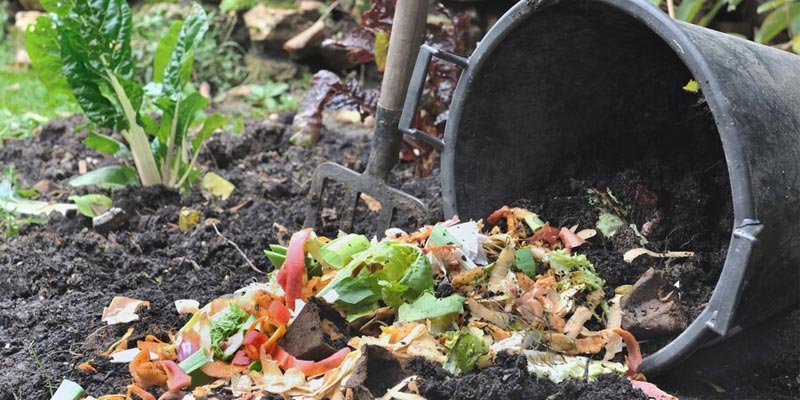
Composting is a brilliant way to reduce waste and create nutrient-rich soil for your garden. But if you’re new to the world of composting, you might be wondering what exactly can go into that pile in your backyard. Don’t worry – we’ve got you covered with this handy guide to the do’s and don’ts of composting.
What Can You Put in Your Compost Bin?
Let’s start with the good stuff – all the lovely bits and bobs you can toss into your compost bin without a second thought.
Compostable materials can be thought of as two categories – ‘green materials’ and ‘brown materials’.
Green materials are rich in nitrogen and include fresh kitchen scraps like vegetable and fruit peels, coffee grounds, and grass clippings. These ingredients help to generate heat in the compost pile, which is essential for breaking down organic matter.
Brown materials are high in carbon and consist of dry leaves, straw, shredded paper, and cardboard. They provide structure to the compost and help absorb excess moisture, preventing the pile from becoming too soggy.
For optimal composting, a good rule of thumb is to maintain a ratio of about three parts brown materials to one part green materials, ensuring that the composting process remains efficient and produces rich, nutrient-dense soil for your garden.
Green materials for composting
Think of these as the ‘fresh’ ingredients in your compost recipe. They’re rich in nitrogen and help your pile heat up, which is essential for breaking everything down.
- Vegetable and fruit scraps: Those apple cores and banana peels are compost gold!
- Coffee grounds and tea leaves: Your morning cuppa can give your compost a boost.
- Fresh grass clippings: Just don’t add too much at once, or you’ll end up with a slimy mess.
- Plant trimmings: Those bits you snip off when deadheading your flowers? Chuck them in!
Brown materials for composting
These are your ‘dry’ ingredients, full of carbon. They help balance out the green materials and give your compost a lovely, crumbly texture.
- Dry leaves and grass: Autumn leaves are perfect for this.
- Shredded paper and cardboard: Just make sure it’s not glossy or coloured.
- Wood chips and sawdust: A little goes a long way with these.
- Straw and hay: Great for adding structure to your pile.
Composting do’s: Best practices for a healthy compost pile
Now that you know what to put in, let’s talk about how to keep your compost pile happy and healthy.
- Balance is key: Aim for a mix of about 3 parts brown to 1 part green materials.
- Keep it moist: Your compost should feel like a wrung-out sponge. Not too wet, not too dry.
- Give it air: Turn your pile every few weeks to keep oxygen flowing.
- Location, location, location: Choose a spot with good drainage and some shade.
What not to compost: Items to avoid in your compost bin
Just as important as knowing what to compost is knowing what to keep out. Some items can attract pests or create nasty odours.
- Meat, fish, and dairy products: These can attract unwanted visitors to your pile.
- Oils and fats: They can disrupt the composting process and create bad smells.
- Diseased plants: Best to bin these to prevent spreading problems to your garden.
- Pet waste: It can contain harmful bacteria. Stick to plant-based materials.
- Treated wood or paper: The chemicals can leach into your compost.
What type of composting bin should I use?
A proper composting bin needs adequate ventilation to speed up decomposition, as well as a lid or a cover to retain heat and keep out un-wanted visitors. The type of bin you need will depend on the size of your garden and how much compost you expect to produce.
Here are some considerations to help you find the perfect container:
Types of Compost Bins
Wooden Compost Bins
- Typically 1x1m in size
- Can produce hundreds of litres of compost
- Often modular, allowing multiple bins
- Natural look that blends with garden landscapes
Plastic Compost Bins
- Ideal for small spaces
- Retain moisture and heat
- Block light to prevent weed growth
- Best placed on grass or earth
Hot Compost Bins
- Insulated with tight-fitting lids
- Decompose materials faster (30-90 days)
- Produce finer compost
- Require a hard surface placement
Key Considerations
- Capacity: Choose a size matching your garden waste production
- Material durability: Look for rot-resistant or treated materials
- Accessibility: Ensure easy access for adding waste and harvesting compost
- Ventilation: Proper air circulation is crucial for decomposition
Pro tip: Consider your garden size, waste volume, and aesthetic preferences when selecting your perfect compost bin.
Troubleshooting common composting problems
Even the best composters run into issues now and then. Here’s how to tackle some common problems:
- Smelly compost? It might be too wet or have too many green materials. Add some browns and give it a turn.
- Pests popping by? Make sure you’re not adding any meat or dairy, and cover fresh food scraps with a layer of browns.
- Slow decomposition? Your pile might be too dry. Give it a sprinkle of water and turn it to speed things up.
How to use your compost in the garden
After all your hard work, you’ll want to put that lovely compost to good use. Here’s how:
- Your compost is ready when it’s dark, crumbly, and smells earthy.
- Mix it into your soil before planting, or use it as a mulch around established plants.
- For potted plants, mix about 1 part compost to 3 parts potting soil.
There you have it – your guide to composting success! Remember, composting is as much an art as it is a science. Don’t be afraid to experiment and find what works best for your garden. Happy composting!
